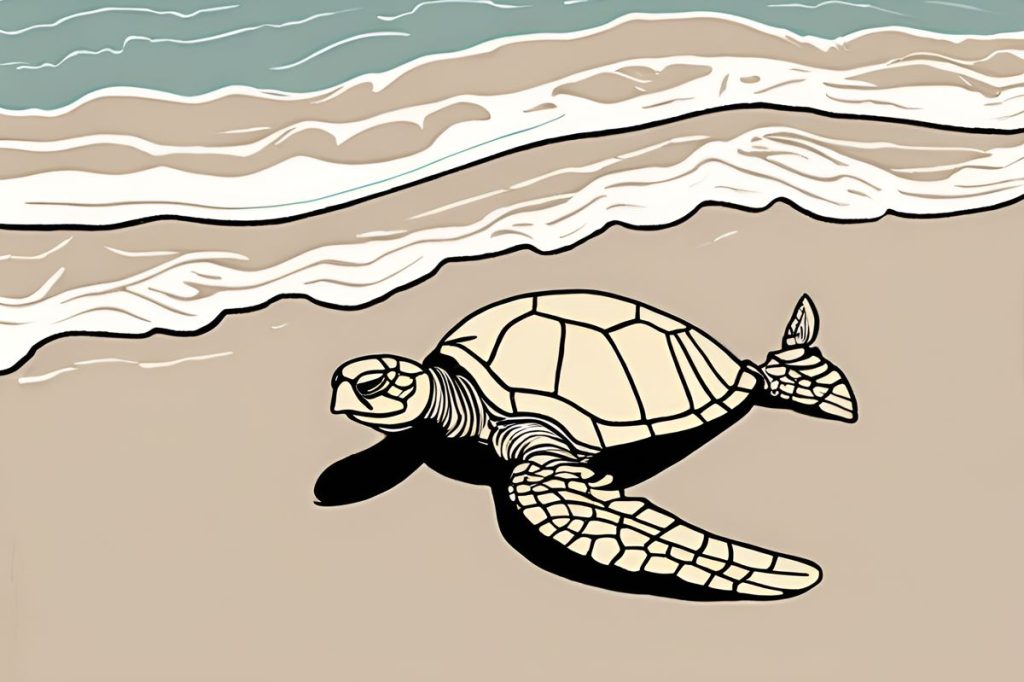On the protected beaches of British bases, sea turtle numbers have soared from just 30 turtles annually to a remarkable 382 this year, thanks to strategic conservation efforts that comply with the EU habitats directive. With protective measures against predators and strict penalties for habitat disruption, these ancient mariners are finally thriving in their natural home, showcasing a successful collaboration between volunteers and environmentalists.
What has led to the increase in sea turtle numbers on protected beaches?
Sea turtle populations have soared on protected beaches due to strategic conservation efforts. These include adherence to the EU habitats directive, non-invasive management tactics, protective measures against predators, and enforcing hefty penalties for habitat disruption. Consequently, monitored beaches have become thriving havens for these ancient mariners.
A Remarkable Recovery
It was not long ago that conservationists voiced deep concerns about the dwindling numbers of sea turtles. These ancient mariners, adrift for over 100 million years, faced a myriad of threats, from poaching to habitat loss. However, in a heartening turn of events, the British bases’ environmental team has observed a staggering 382 sea turtles gracing their shores this year. This number is a resounding testament to the relentless conservation efforts that have been underway.
Senior environmental officer Alexia Perdiou has highlighted the phenomenal increase from the mere 30 turtles spotted annually between 1994 to 2011. After the implementation of a crucial law aligning with the European Union’s habitats directive, the bases saw a paradigm shift in their approach to wildlife management. The law’s enactment catalyzed a strategic embrace of non-invasive conservation tactics, ensuring the protection of these gentle reptiles.
The Strategy Behind Success
The secret behind the burgeoning turtle population lies in the meticulous and minimalistic intervention strategies devised by the bases’ environmental department. By adhering to the European Union’s habitats directive, the bases have managed to craft a sanctuary for the turtles, safeguarded from the reach of urban development and the glare of artificial lighting. Such conditions simulate the turtles’ natural habitats, offering them a haven to thrive in.
Perdiou’s department has adopted a hands-off approach to the nests, coupled with protective measures against predators. By placing an aluminum cage over discovered nests, they shield the future hatchlings from natural threats. Yet, the journey of the newborn turtles remains untouched by human hands, allowing them to etch the unique imprint of their natal sands in their memory, critical for their eventual return to breed.
A Sustainable Future
While the current triumphs in turtle conservation are laudable, Perdiou is cautious, reminding us that it takes approximately two decades to fully assess the effectiveness of these measures. It is during this time span that turtles mature and undertake the arduous voyage back to their birthing grounds to reproduce. The continuous patrols by dedicated volunteers, along with stringent penalties for human encroachment, have been instrumental in fortifying the turtles’ habitat.
The penalties for disrupting this delicate ecosystem are severe – a €17,000 fine or imprisonment of up to three years – a stark reminder that the conservation of nature is not just a moral duty but a legal obligation. These robust protections serve as a powerful deterrent, safeguarding the turtles and ensuring that the beaches they depend on remain pristine for generations to come.
A Collaborative Effort
The tale of sea turtles’ recovery is not just one of legal triumphs and environmental strategies. It is a narrative of cooperation, where volunteers, environmentalists, and the legal framework unite to craft a success story for conservation. The journey of each hatchling, from breaking the egg to reaching the ocean’s embrace, is underpinned by a community working in unison to defend nature’s delicate balance.
The future looks promising for these sea turtles as they navigate the Mediterranean waters. As per Perdiou’s vigilant supervision and the unwavering commitment of her team, the beaches once sparse with turtle life are now bustling with the activity of these ancient creatures. This resurgence is a beacon of hope, serving as a reminder of what can be achieved when humanity acts as stewards of the natural world.
FAQ: Nature’s Triumph – Sea Turtle Conservation
What has led to the increase in sea turtle numbers on protected beaches?
The remarkable increase in sea turtle numbers, from just 30 turtles annually to 382 this year, can be attributed to strategic conservation efforts. These efforts include adherence to the EU habitats directive, implementing non-invasive management tactics, protective measures against predators, and enforcing strict penalties for habitat disruption. This collaborative approach has successfully created safe havens for these ancient mariners.
How do conservation efforts protect sea turtle nests?
Conservation efforts employ minimalistic intervention strategies to protect sea turtle nests. The environmental department uses aluminum cages to shield discovered nests from natural predators while allowing the hatchlings to emerge unassisted. This hands-off approach is essential as it enables the newborn turtles to imprint their natal sand, which is critical for their future return to breed.
What are the penalties for disrupting sea turtle habitats?
To safeguard the delicate ecosystem in which sea turtles thrive, strict penalties have been put in place for habitat disruption. Offenders face severe consequences, including fines of up to €17,000 or imprisonment for up to three years. These legal repercussions serve as a powerful deterrent, emphasizing the importance of conserving nature and protecting the turtles’ habitats.
What role do volunteers play in the conservation of sea turtles?
Volunteers play a crucial role in the ongoing conservation efforts for sea turtles. Their continuous patrols help monitor the beaches and ensure compliance with protective measures. This collaboration between volunteers, environmentalists, and legal frameworks has been instrumental in fortifying the turtles’ habitat, contributing to the significant recovery of sea turtle populations on the protected beaches.

